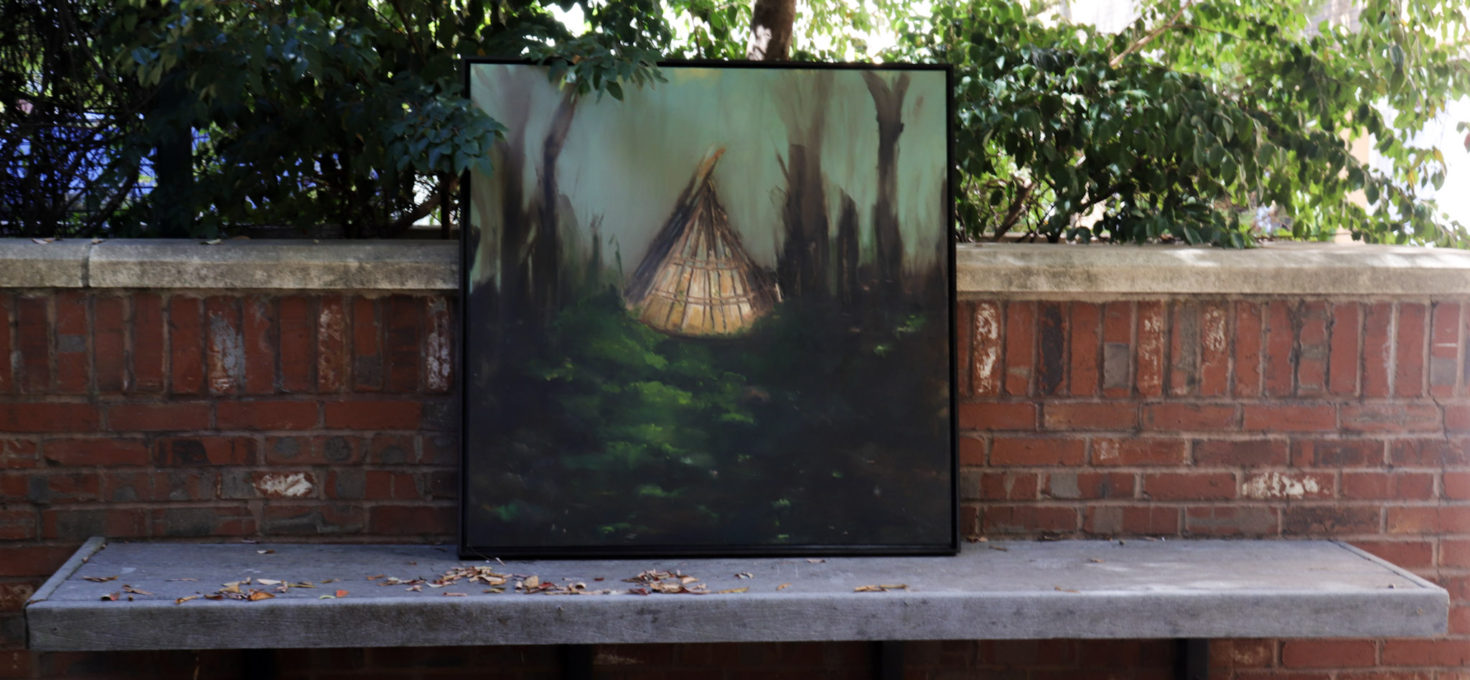Can you identify an oil painting vs. acrylic? If not, after reading this post you will be a pro! There are a few key differences in how to paint with oils vs. acrylic. Also, the final products can look vastly different in texture and hue.
Read on to find 5 key differences between oil and acrylic paint.
Oil Painting vs. Acrylic: How to Tell the Difference

1. Oil Based Paint vs. Polymer Emulsion
One of the key differences between oil paint and acrylic is, well…OIL. Oil paint is based in oil which means it takes slower to dry than acrylic paint. Acrylic paint is based in a polymer emulsion. Therefore, acrylic paint will dry much faster than oils and you can easily paint over your image without creating a muddy mess.
Oil paint is known for being a bit more temperamental than acrylic but don’t let that deter you. Slow drying paint can be great for blending and creating realism in art.
2. Oil Painting vs. Acrylic: What Mediums to Use
Oil paint will dry with a rich shine while acrylics tend to appear more matte in texture. If you like the fast drying time of acrylic paint but prefer the shine of oils, try adding a clear gloss varnish to create a subtle oil paint effect.
You can also play with fun mediums like heavy gel that make acrylic paint thicker and perfect for creating texture using the palette knife. Try using flow aid to help your acrylic paint glide over the canvas like watercolor paint.
3. Oil Painting vs. Acrylic: How to Choose Your Materials
One of the most fun parts about oil painting is that you get to use additives that will extend your oil paint, making it last longer.
Oil Painting Supply List: Everything You Need To Start an Oil Painting
- Low Odor Solvent (use this to break up your paint and create a wash on the blank canvas as your first layer)
- Linseed Oil (this oil will reduce the thickness, slow down the drying time and increase the gloss finish of your paint)
- Oil Paint (not interested in buying the entire set? Start with red, yellow and blue + white and black)
- Brush Cleaner ( oil paint does not come out easily, be sure not to get any on your clothes!)
- Hog Hair Brushes (or any brush with a sturdy bristle)
4. Similarities between Oil Paint and Acrylic
While oil paint and acrylic are quite different, you can use the same type of stretched canvas as a painting surface. Pre-made canvases are already primed with white gesso. If you are stretching the canvas yourself, you will need to sand and prime the canvas with gesso before painting.
Also, you can apply gesso to thick paper and use as your canvas. Make sure to also apply gesso to the back of the paper to avoid any warping (or at least make a large “X” with your gesso on the back to create balance).
Make sure the gesso is dry before you begin your masterpiece!
5. Oil Painting vs. Acrylic: Which is Best for Beginners?
Lastly, I would suggest starting with oil paint as a beginner. This may be different than other artist’s advice but it’s mine and I’m sticking to it! As a beginner, it’s helpful to learn how to layer your hues to create light and depth in your work. Oil painting forces you to take your time and paint in layers since the drying time is much slower than that of acrylics.
Once you have mastered oils, you can apply the same layering principals to watercolor. Also, painting with acrylics will be a breath of fresh air after losing your patience with oils!
Let us know how it goes in the comments below!
~Alexandria
